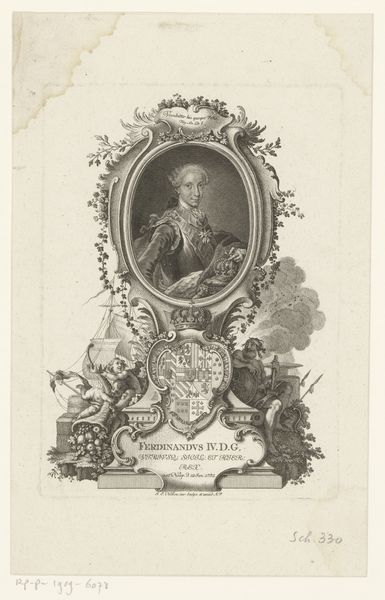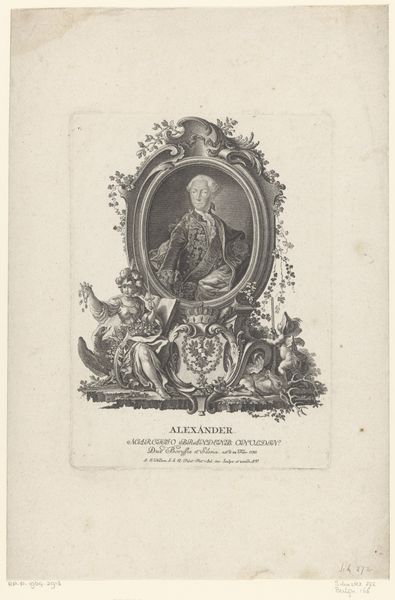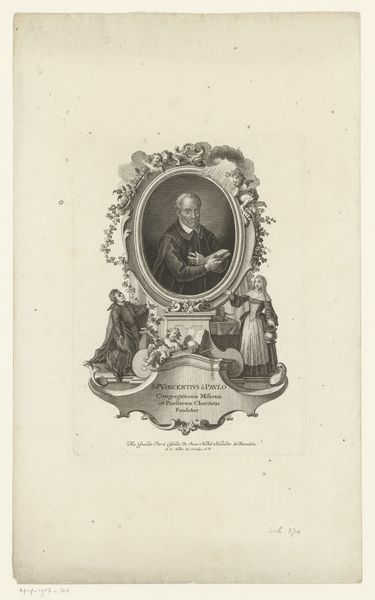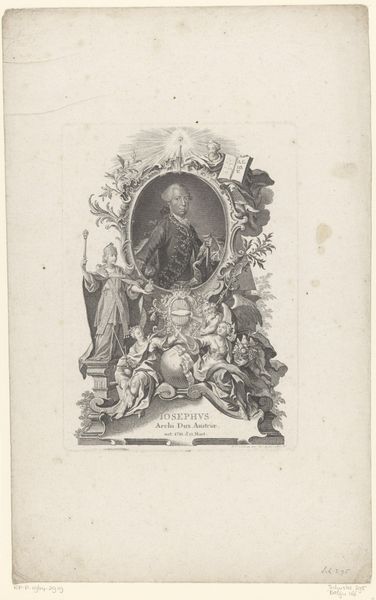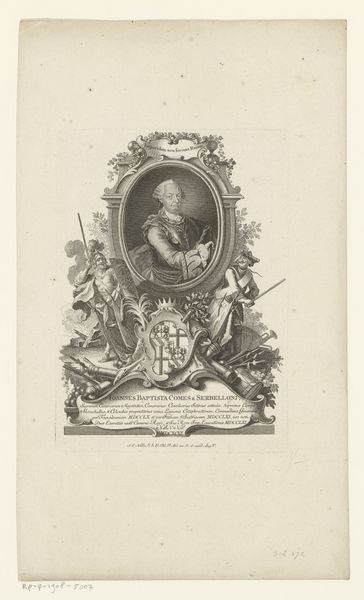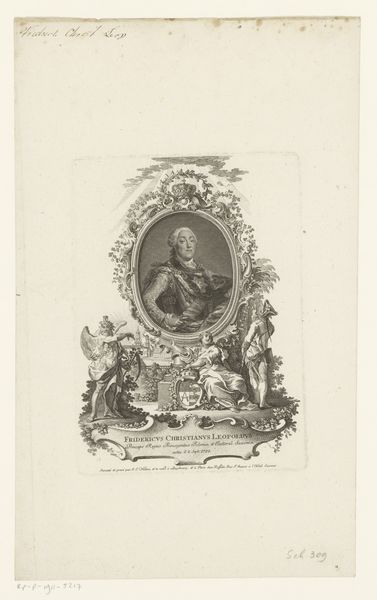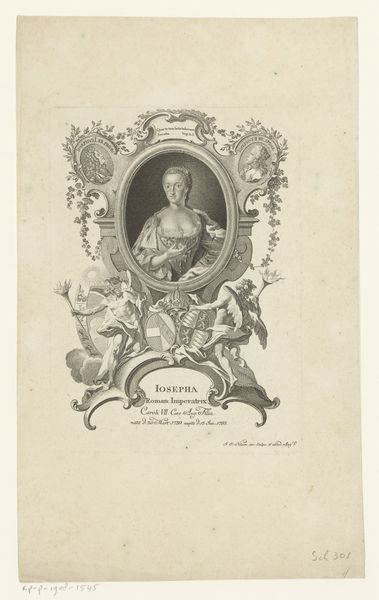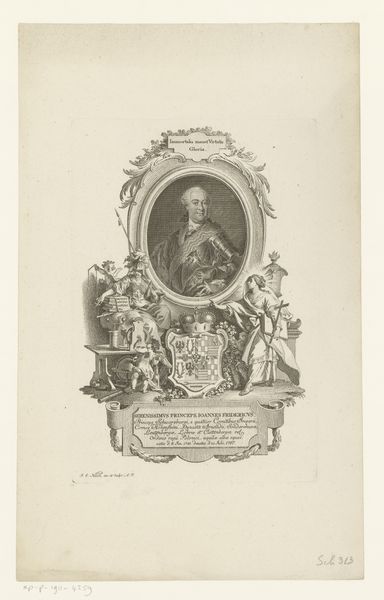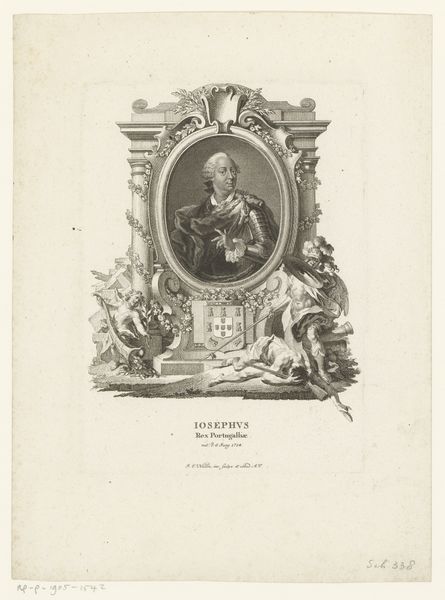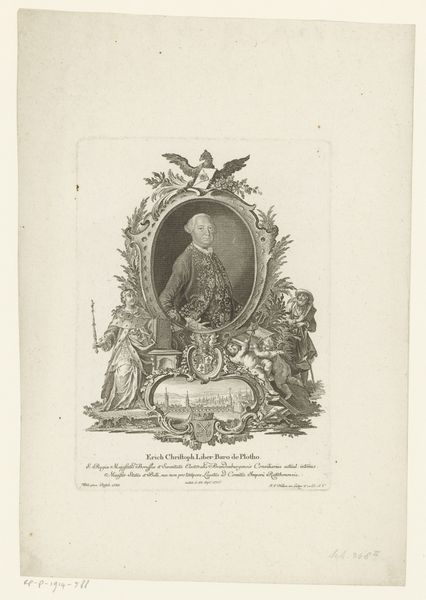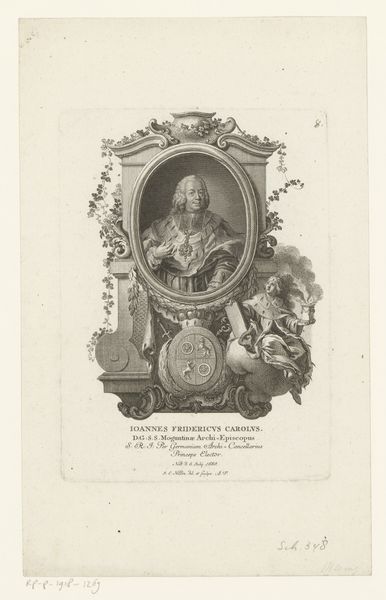
Dimensions: height 221 mm, width 161 mm
Copyright: Rijks Museum: Open Domain
Editor: So, this is Johann Esaias Nilson's "Portret van Karel Frederik van Baden," made sometime between 1771 and 1788. It’s an engraving, so it's a print. The detail is amazing for such a small-scale work. It feels very… formal, obviously, given the subject and the Baroque style. What strikes you about this piece? Curator: It’s interesting how this portrait, ostensibly celebrating power, can also be read through the lens of its historical moment. Nilson produced this during a period of immense social and political upheaval, with Enlightenment ideals challenging aristocratic authority. This image performs its representation of power. Editor: How so? Curator: Think about the visual language at play: the oval frame, the ornate decorations, the architectural backdrop. All contribute to constructing a particular image of Karel Frederik. The angels even. This imagery harkens back to older models of aristocratic legitimacy, while revolutions in America and France began questioning hereditary privilege. Do you think the artist was questioning these models? Editor: Perhaps indirectly? He might simply be employing the established visual vocabulary of power. Curator: Precisely. And that’s where it becomes truly interesting. Is Nilson complicit in reinforcing these structures, or is he documenting a power structure that's already beginning to crumble? Is it glorifying, or acting as a document of power? Editor: That reframes how I see it. It's less a straightforward glorification and more a record of a changing world. Curator: Exactly. The portrait becomes a site of tension between tradition and modernity. A single work may speak for many ideological frameworks and struggles. Editor: It’s fascinating how the social context can completely alter your perception of something that initially seems straightforward.
Comments
No comments
Be the first to comment and join the conversation on the ultimate creative platform.
